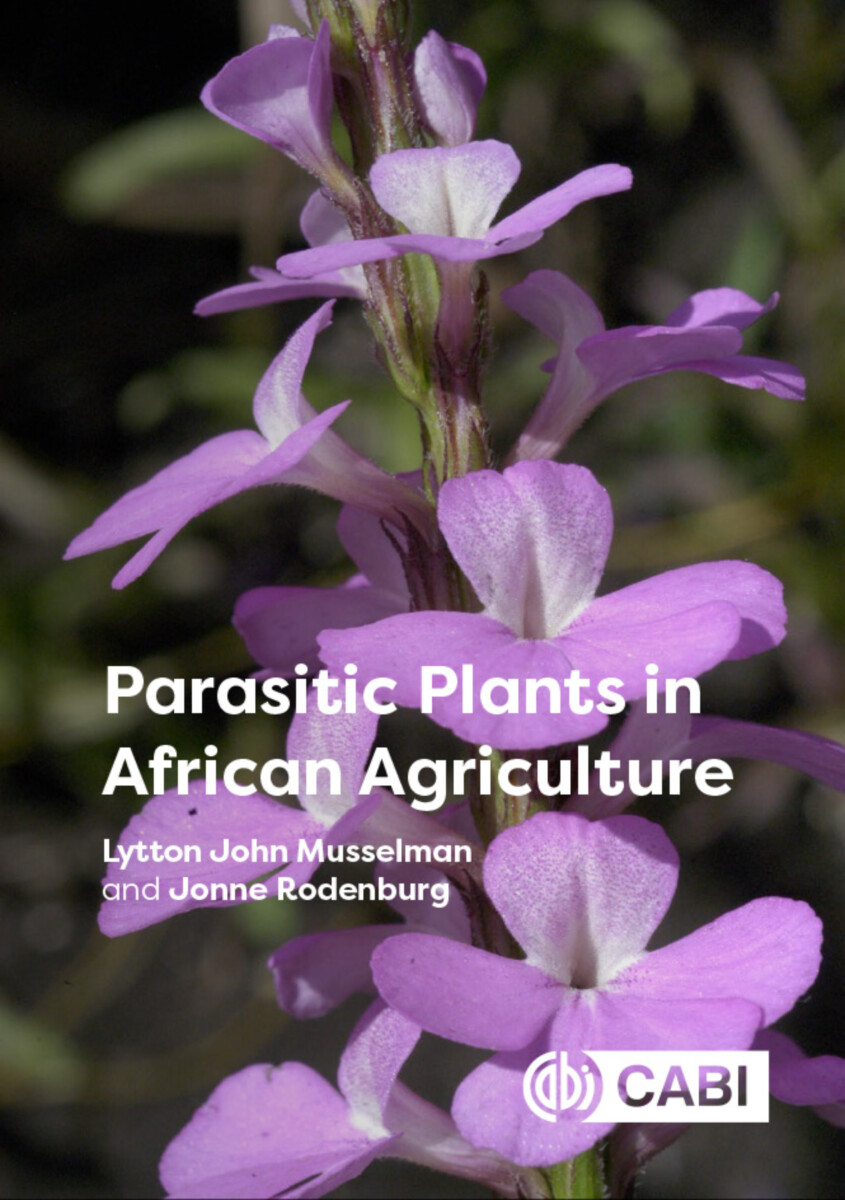Parasitic Plants in African Agriculture
- Publisher
CABI - Published
21st November 2023 - ISBN 9781789247633
- Language English
- Pages 208 pp.
- Size 6" x 9"
- Images photos, graphs, & maps
Parasitic Plants in African Agriculture brings together for the first time in a single volume, the ecology, biology, damage, and control of all groups of African parasitic plants including both the relatively few parasites introduced to the continent as well as those native parasites that have spread from within Africa. The book covers the well-known witchweeds and broomrapes but also groups and species that have received less attention including mistletoes, dodders, rice vampire weed, and other species posing threats.
The book distinguishes between stem and root parasitic weeds and between holoparasites and (facultative or obligate) hemiparasites. Based on their research and experience collectively spanning six decades, the authors provide an authoritative and state-of-the-art overview of the distribution, biology and impact of these highly specialized weeds and include recommendations for their management. Since parasitic plants in African agriculture primarily affect smallholder farmers, these weeds are explicitly discussed within a context of resource limitations and global changes. Readers are informed on all parasitic plant species relevant to African agriculture and the impact these plants have on crop production and livelihoods of smallholders in a changing world. Current and future management strategies are outlined in terms of their principles and effectiveness as well as their feasibility and affordability for farmers, all of which determine farmer adoption. The final chapter synthesizes some of the relevant findings and statistics regarding parasitic weed distribution and their host crops and discusses implications in terms of future crop protection concerns in African agricultural systems.
Key features:
- Authoritative text based on extensive field and laboratory work.
- First comprehensive state-of-the-art overview of parasitic plants and their management in Africa.
- Highly illustrated with photos, graphs and species distribution maps.
- Reviews previous basic and applied work, with relevance to smallholder farming systems.
About the Authors
Preface
Acknowledgements
1: Introduction to Parasitic Plants
Part I Stem Parasites
2: Mistletoe
3: Love Vine
4: Dodder
Part II Root Parasites
5: Rice Vampire Weed
6: Buchnera
7: Witchweed
8: Alectra
9: Broomrape
10: Thonningia
11: Other Root Parasites
Part III Parasitic Plants in Practice
12: Parasitic Plants in African Smallholder Farming Systems
13: Parasitic Weed Management
14: Synthesis and Outlook
Appendix List of Scientific Names of Crops
General Index
Index of Crops
Lytton John Musselman
Lytton John Musselman is Mary Payne Hogan Professor Botany, and Manager of the Blackwater Ecologic Preserve in the Department of Biological Sciences at Old Dominion where he also served as Department Chair. His research centers on the biology of parasitic angiosperms, especially those in the Middle East and Africa. Recipient of four Fulbright Awards (Sudan, West Bank, Jordan, Brunei Darussalam), he has also been a Visiting Professor at the American University of Beirut, and the American University of Iraq-Sulaimani. He is co-founder and co-editor of Haustorium, the newsletter of the International Parasitic Plants Society, and served as a consultant to the International Institute of Tropical Agriculture and the International Center for Agricultural Research in the Dry Areas. His most recent books are Edible Wild Plants of the Carolinas: A Forager's Companion (with Peter W. Schafran) 2021, and Solomon Described Plants: A Botanical Guide to Plant Life in the Bible (2022).
Jonne Rodenburg
No information


